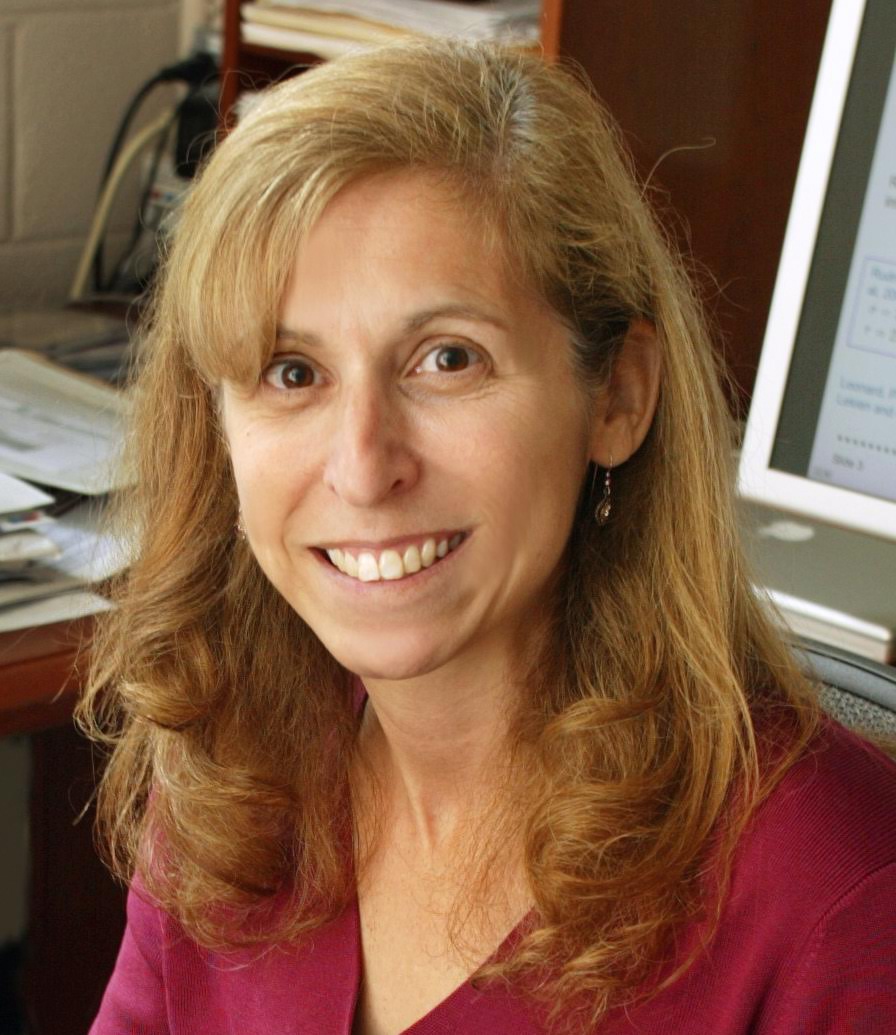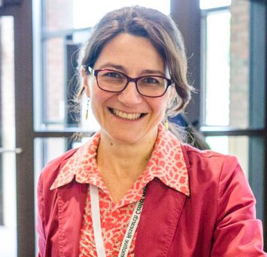|
Organized by
Your IP: 216.73.216.60
Unique visitors: 171389
Total Page views:51494
(Since August 15th,
2015)
|
|
 |
Aside from the technical sessions, the 2017 CDC will feature three plenary lecture and the Bode Lecture.
The Bode Lecture will be presented by Prof. Naomi E. Leonard
of the Mechanical and Aerospace Engineering Department, Princeton University.
The Plenary speakers will be:
- Prof. Graham C. Goodwin
of the School of Electrical & Computer Engineering,
University of Newcastle, Australia.
- Prof. Pablo Parrilo
of the Electrical Engineering and Computer Science Department
at the Massachusetts Institute of Technology, USA.
- Prof. Anna G. Stefanopoulou
of the Department of Mechanical Engineering, University of Michigan, USA.
|
The complete Technical Program can be consulted here
Details about the proposed Workshops can be consulted here
Speaker:
 Naomi E. Leonard,
Mechanical and Aerospace Engineering Department, Princeton University.
Naomi E. Leonard,
Mechanical and Aerospace Engineering Department, Princeton University.
Title:
Learning from Nature: When Models Meet Multitudes
Abstract.
Feedback is as ubiquitous in nature as it is in design. So control theory can help us
understand both natural and designed systems. Even better, generalized models
abstracted from nature give us a mathematical means to connect control theoretic
explanations of nature with opportunities in control design. Control theory is
enriched by the language, questions, and perspectives of fields as diverse as animal
behavior, cognitive science, and dance. I will present a model for multi-agent
dynamics that is informed by these fields. The model derives from principles of
symmetry and bifurcation, which exploit instability to recover the remarkable
capacity of natural groups to trade off flexibility and stability.
Biography.
Naomi Ehrich Leonard is the Edwin S. Wilsey Professor of Mechanical and Aerospace Engineering, associated faculty in Applied and Computational Mathematics, and Director of the Council on Science and Technology at Princeton University. She is a MacArthur Fellow, a member of the American Academy of Arts and Sciences, and a Fellow of the IEEE, SIAM, IFAC, and ASME. She received her B.S.E. in Mechanical Engineering from Princeton University and her Ph.D. in Electrical Engineering from the University of Maryland. Between degrees, she worked in the electric power industry. Her current research focuses on theory and application in multi-agent systems, mobile sensor networks, collective animal behavior, and human decision dynamics. She studies how network structure, heterogeneity of information, leadership, and nonlinearity determine robust and flexible collective dynamics, and she designs methodology for distributed control of multi-agent systems with provable performance. In collaboration with biologists, she examines the dynamics of human decision-making under uncertainty and explores mechanisms that explain the inspiring dynamics of animal groups, including fish, honeybees, zebras, starlings, and harvester ants. Leonard led a large,multidisciplinary project that culminated in a major field demonstration in Monterey Bay, CA of a first-of- its-kind automated and adaptive ocean observing system, featuring a coordinated network of underwater robotic vehicles. She also works at the intersection of dance and collective dynamics.
Speaker:
 Graham C. Goodwin,
Emeritus Laureate Professor,
School of Elect Engineering and Computer Science (Electrical and Computer Engineering),
University of Newcastle, Australia.
Graham C. Goodwin,
Emeritus Laureate Professor,
School of Elect Engineering and Computer Science (Electrical and Computer Engineering),
University of Newcastle, Australia.
Title:
Rolling horizon stochastic policy optimization with application to the treatment of type-1 diabetes mellitus
Abstract.
Recent work on Model Predictive Control has refocused attention on the role of future disturbance uncertainty. One way of dealing with this issue is to use policy rather than sequence optimization. However, this comes at a significant increase in computational burden. In this talk we will outline strategies for dealing with the computational issue, including using quantized scenarios to represent the future disturbances. The related issue of providing performance guarantees in the face of high uncertainty will also be discussed. The ideas will be illustrated by the development of a new treatment strategy for Type 1 diabetes mellitus.
Biography.
Graham Goodwin received B.Sc., B.E. and Ph.D. from the University of New South Wales. In 2010 he was awarded the IEEE Control Systems Field Award and in 2013 he received the Rufus T. Oldenburger Medal from the American Society of Mechanical Engineers. He was twice awarded the International Federation of Automatic Control Best Engineering Text Book. He is a Fellow of IEEE; an Honorary Fellow of Institute of Engineers, Australia; a Fellow of the International Federation of Automatic Control, a Fellow of the Australian Academy of Science; a Fellow of the Australian Academy of Technology, Science and Engineering; a Member of the International Statistical Institute; a Fellow of the Royal Society, London and a Foreign Member of the Royal Swedish Academy of Sciences. He holds Honorary Doctorates from Lund Institute of Technology, Sweden and the Technion Israel. He is the co-author of ten books, four edited books, and several hundred papers. Graham is a Distinguished Professor at Harbin Institute of Technology (China), Northwestern University (China), Zhengzhou University (China) and Universidad Técnica Federico Santa María (Chile). He holds 16 International Patents covering rolling mill technology, telecommunications, mine planning and mineral exploration.
 Speaker:
Pablo Parrilo,
Professor of Electrical Engineering and Computer Science,
Massachusetts Institute of Technology, USA.
Speaker:
Pablo Parrilo,
Professor of Electrical Engineering and Computer Science,
Massachusetts Institute of Technology, USA.
Title:
The role of Structure in Optimization and Control:
how to detect it, and how to exploit it
Abstract.
In many application domains, including systems and control theory, the
optimization problems that appear are seldom "generic" but instead they often
have well-defined structural features. Depending on the situation, such
structure may be described algebraically (e.g., by transformations under which
the problem is invariant, like linearity or time-invariance), geometrically
(by restricting the feasible set to a given manifold/variety), or graphically
(e.g., by a graph summarizing the interactions among decision variables).
Exploiting this structure is crucial for practical efficiency. In this talk we
will provide a gentle introduction to these ideas, surveying the basic notions
as well as describing algorithmic techniques to detect and exploit these
properties. In particular, we will discuss some recent developments, including
dimension/symmetry reduction techniques for SDPs, and chordal networks. As we
will illustrate through applications, algorithms that automatically exploit
structure can significantly outperform existing techniques.
Biography.
Pablo A. Parrilo is a Professor of Electrical Engineering and Computer Science at the Massachusetts Institute of Technology. He is currently Associate Director of the Laboratory for Information and Decision Systems (LIDS), and is also affiliated with the Operations Research Center (ORC). Past appointments include Assistant Professor at the Automatic Control Laboratory of the Swiss Federal Institute of Technology (ETH Zurich), Visiting Associate Professor at the California Institute of Technology, as well as short-term research
visits at the University of California at Santa Barbara (Physics), Lund Institute of Technology (Automatic Control), and University of California at Berkeley (Mathematics). He received an Electronics Engineering undergraduate degree from the University of Buenos Aires, and a PhD in Control and Dynamical Systems from the California Institute of Technology.
His research interests include optimization methods for engineering applications, control and identification of uncertain complex systems, robustness analysis and synthesis, and the development and application of computational tools based on convex optimization and algorithmic algebra to practically relevant engineering problems.
Prof. Parrilo has received several distinctions, including a Finmeccanica Career Development Chair, the Donald P. Eckman Award of the American Automatic Control Council, the SIAM Activity Group on Control and Systems Theory (SIAG/CST) Prize, the IEEE Antonio Ruberti Young Researcher Prize, and the Farkas Prize of the INFORMS Optimization Society. He is an IEEE Fellow.
 Speaker:
Anna G. Stefanopoulou,
William Clay Ford Professor of Manufacturing,
Department of Mechanical Engineering,
University of Michigan, USA.
Speaker:
Anna G. Stefanopoulou,
William Clay Ford Professor of Manufacturing,
Department of Mechanical Engineering,
University of Michigan, USA.
Title:
Control Engineers: The Unsung Heroes of Battery Technology
Abstract.
The 25th anniversary of the commercialization of lithium-ion batteries marks their wide-spread use in handheld consumer electronics and coincides with a period of intense efforts for powering electric vehicles. Managing the potent brew of lithium ions in the large quantities necessary for vehicle propulsion is anything but straightforward. Designing the complex conductive structure, choosing the electrode material for locking the energy in high potential states and synthesizing the interfaces for releasing the chemical energy at fast but controllable rates has been the focus of the electrochemists and material scientists. But from the Rosetta-Philae spacecraft landing three billion miles away from Earth to the daily commute of a hybrid electric automobile, the control engineers behind the battery management system (BMS) have been the unsung heroes.
The BMS is the brain of the battery system and is responsible for State of Charge (SOC), State of Health (SOH) and State of Power (SOP) estimation while protecting the cell by limiting its power. The BMS relies on accurate prediction of complex electrochemical, thermal and mechanical phenomena. This raises the question of model and parameter accuracy. Moreover, if the cells are aging, which parameters should we adapt after leveraging limited sensor information from the measured terminal voltage and sparse surface temperatures? With such a frugal sensor set, what is the optimal sensor placement? To this end, control techniques and novel sensors that measure the cell swelling during lithium intercalation and thermal expansion will be presented. We will conclude by highlighting the fundamental difficulties that keep every battery control engineer awake, namely predicting local hot spots, detecting internal shorts, and managing the overwhelming energy released during a thermal runaway.
Biography.
Anna G. Stefanopoulou is the William Clay Ford Professor of Manufacturing at the University of Michigan. She has been on the faculty of the Department of Mechanical Engineering since 2000, and serves as the Director of the Automotive Research Center a multi-university Center of Excellence in Modeling and Simulation of Ground Vehicles. She obtained her Diploma (1991, Nat. Tech. Univ. of Athens, Greece) in Naval Architecture and Marine Engineering and her Ph.D. (1996, University of Michigan) in Electrical Engineering and Computer Science. She is an ASME Fellow (08) and an IEEE Fellow (09), an elected member of the Executive Committee of the ASME Dynamics Systems and Control Division and the Board of Governors of the IEEE Control Systems Society, the Founding Chair of the ASME DSCD Energy Systems Technical Committee and a member of a U.S. National Research Council committee on the 2025 US. Light Duty Vehicle Fuel Economy Standards.
She is a recipient of the 2012 University of Michigan, College of Engineering Research Award, the 2009 ASME Gustus L. Larson Memorial Award, a 2008 Univ. of Michigan Faculty Recognition award, the 2005 Outstanding Young Investigator by the ASME DSC division, a 2005 Henry Russel award, a 2002 Ralph Teetor SAE educational award, a 1997 NSF CAREER award and selected as one of the 2002 world’s most promising innovators from the MIT Technology Review. She has co-authored a book, 20 US patents, 5 best paper awards and more than 250 publications on estimation and control of internal combustion engines and electrochemical processes such as fuel cells and batteries.
|
|
We suggest that you use Firefox or Chrome instead of Internet Explorer, to prevent copyright upload issues to IEEE.
Key dates (2017)
| Submission Site Open: | January 4 |
Initial Paper
Submissions to L-CSS with CDC Option Due: | March 6 |
Invited Session
Proposals Due: | March 10 |
Initial Paper
Submissions Due: | March 20 |
| Workshop Proposals Due: | May 1 |
Paper and Workshop
Decision Notification: | mid-July |
Best Student Paper
Nominations Opens: | July 20 |
| Final Submission Open: | August 1 |
| Registration Opens: | August 1 |
Best Student Paper
Nominations Closes: | August 15 |
| Accepted Papers Due: | September 20 |
| Early Bird Closes: | October 1 |
| Online Registration Closes: | December 5 |
| Conference opens: | December 12 |
| Conference closes: | December 15 |
Platinum Sponsors
Gold Sponsors
Silver Sponsors
Exhibitors
Click here to see the complete list of sponsors and exhibitors
|





